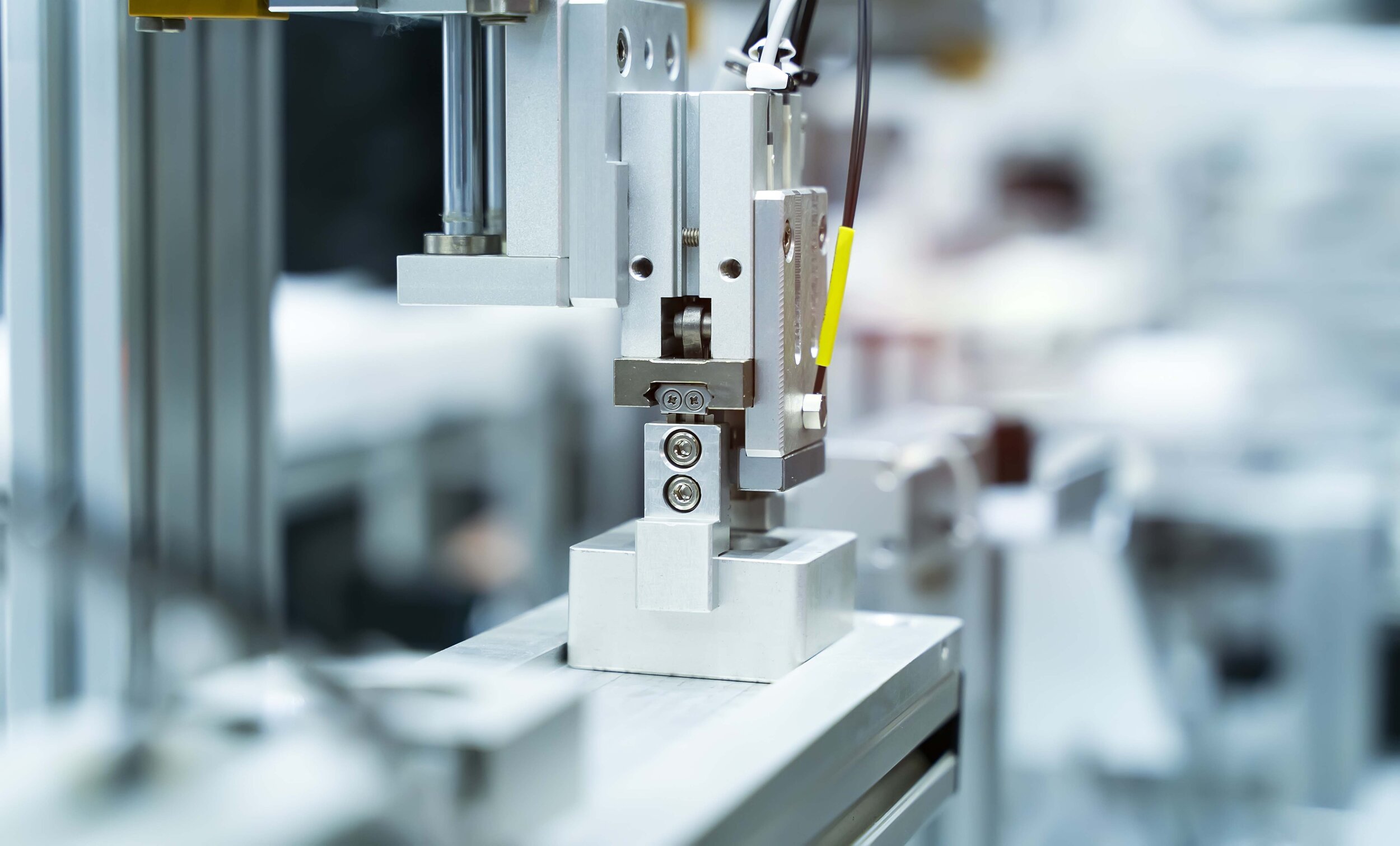Successfully driving the value mechanisms for digitally enabled advanced services
Advanced services are a new route for manufacturers to secure competitive advantage in the market. With rising availability and adoption of digital technology, building an advanced service business model is becoming easier than ever. However, manufacturers still face substantial challenges in understanding where exactly digital technology contributes and how to extract maximum value from it. A current research project at The Advanced Services Group explores this with a focus on the role of digital technology in driving the interdependent value mechanisms of advanced services.
Advanced services - a new manufacturing business model
Commoditisation, new market entrants, disruptive vendors of technology and complex customer demands are some of the common reasons why manufacturers are looking for opportunities to differentiate their businesses. Offering services is an opportunity that many have found lucrative. Unlike products, services are almost impossible to replicate, as customers tend to measure services on their experience, which is always unique to the provider. For manufacturers, service experiences that satisfy customer needs and provide additional value have the potential to provide a strong competitive advantage that cannot be replicated.
The process of transforming a product-focused business to a service-focused one is known as servitization. Servitization aims to create a business model based on delivering outcomes of products as services rather than selling products. Wartsila, Caterpillar, Volvo, ABB and Rolls-Royce are some of the best-known, pioneering manufacturers in the space of advanced services (1). It is important to note that while these manufacturers invested substantial time and resources in the transformation, advanced services are more accessible to modern manufacturers as digital technology becomes cheaper and ubiquitous.
Digital technologies are a key resource in the transformation process. Technologies such as IoT, Cloud Computing, AI, Big Data analytics, as well as data sharing platforms are the most commonly used digital technologies in advanced services. Our research (2) shows that these technologies can be used in three specific ways.
Firstly, digital technologies can be used to establish remote connections with the products and collect operational data. Secondly, they can be used to improve the manufacturer’s business performance. Finally, digital technology can also be used to directly support the customers’ businesses.
On a more operational level, digital technologies can optimise maintenance activities, improve repair efficiency and consumables tracking, enhance fleet management services, improve operational consulting services, allow customers to self-repair products, make performance analysis transparent, reduce operational errors and support knowledge transfer between the manufacturer and customers (3).
It is clear that digital technology can support advanced services in many ways. Yet, successfully driving an advanced service business model using digital technology remains a challenge for many manufacturers.
Understanding the value mechanisms of a business model
In order to create a successful advanced service business model, manufacturers must explore in-depth how they create, deliver and capture value. Value creation is the mechanism to generate the offering for the customer. Value delivery is a mechanism to deliver the offering to the customer. Value capture is a mechanism to receive value back from the customer. These three mechanisms together make a fully functioning business model. If we look at how digital technologies contribute to these individual mechanisms, they appear mainly as a key contributor to value creation. However, digital technology can also contribute to value delivery and capture. Paying due attention to all three mechanisms will help manufacturers on their journey to an advanced service business model.
In terms of value delivery, digital technology can support advanced services by making the delivery process faster or more efficient. MAN Truck and Bus (UK), for example, used telematics to provide guaranteed truck performance and improved driver performance. To deliver this service, MAN used digital technology to accurately diagnose and predict breakdowns, resulting in time and resource efficient maintenance activities. Similarly, Koolmill Systems, a cereal milling machine manufacturer in the UK provide guaranteed machine hours of high-performance milling. It uses AI to monitor the condition of the machine and make critical interventions to avoid breakdowns and damage to the final product.
The role of digital technology in value capture is equally important to intangible forms of value. Commonly, manufacturers do not look beyond the tangible forms of value such as revenue and profit, yet, intangible forms of value, such as knowledge and relationships, can be just as important. For example, Getinge, a healthcare product manufacturer monitored product breakdown patterns to gather knowledge about common faults and operator behaviour. Tennant Co. a cleaning equipment manufacturer used IoT to connect product fleets and provide complete visibility of location, usage, performance and condition to site managers. This resulted not only in increased trust, but also long-term service contracts for all customer sites in specific regions.
Driving the value mechanisms successfully
The impact of digital technology on a value mechanism is not limited to it individually but also affects other mechanisms. By delivering the services fast and efficiently (value delivery) in the previous example, MAN’s customers also experienced peace of mind and additional value in the services (value creation). Through its value delivery process, Koolmill gained the customer’s trust and secured additional contracts (value capture). Getinge used the knowledge it gathered (value capture) to make its products more serviceable through re-design and thus improved product uptime (value creation). Tennant Co’s ability to secure regional contracts (value capture) reduced resources spent on service across the sites (value delivery) as technicians could attend to multiple products in a single visit.
Such relationships indicate that while these mechanisms are distinct, they are not independent of each other. A successful advanced service business model depends on these mechanisms working together as connected cogs in a clock. Each cog is helping the other move and together they deliver the final output. In this case, the output is competing through advanced services. The role of digital technology is to drive these cogs towards achieving the set goal.
Having understood the value mechanisms for their advanced services, manufacturers can identify how they are interconnected. This will help them understand how changes to one value mechanism (such as value creation) can affect another value mechanism (such as value capture). It will provide a holistic view of the business, and allow manufacturers to manage and predict the impact of architectural changes to their business models, such as the transformation through servitization. By having the ability to control such a transformation, manufacturers will be able to strategically choose how and which digital technology is best suited to enable desired outcomes.
To summarise:
Manufacturers should identify what value creation, delivery, and capture mean for their advanced service business model.
Next, manufacturers should focus on establishing the connections between their value mechanisms.
Based on these connections, manufacturers can decide how digital technology should be used to drive their business model of advanced services.
The benefits of using such an approach will become clearer as manufacturers operationalise the business model. To come back to the analogy of cogs in a clock, only once the cogs start working together, can we understand how well they are aligned or how to drive them better. Similarly, only by operationalising the business model can the manufacturers find answers to questions such as how improved value delivery affects value creation, or how increased value capture improves value delivery, or how digital technology improves this alignment.
About the author
Dr Parikshit Naik is Research Associate in the Advanced Services Group at Aston Business School. His research interests include digitally enabled organisational transformation, business model innovation, service innovations, and adoption of advanced services.
References
Kohtamäki, M., Parida, V., Oghazi, P., Gebauer, H., & Baines, T. (2019). Digital servitization business models in ecosystems: A theory of the firm. Journal of Business Research, 104, 380-392.
Naik, P., Schroeder, A., Kapoor, K. K., Bigdeli, A. Z., & Baines, T. (2020). Behind the scenes of digital servitization: Actualising IoT-enabled affordances. Industrial Marketing Management, 89, 232-244
Schroeder, A., Naik, P., Bigdeli, A. Z., & Baines, T. (2020). Digitally enabled advanced services: a socio-technical perspective on the role of the internet of things (IoT). International Journal of Operations & Production Management, 40 (7/8), 1243-1268





